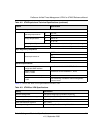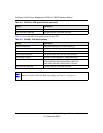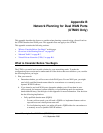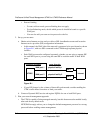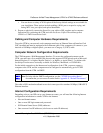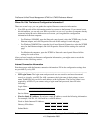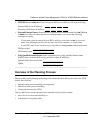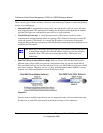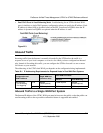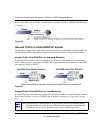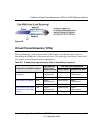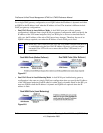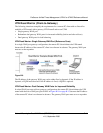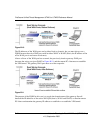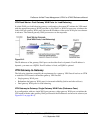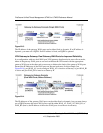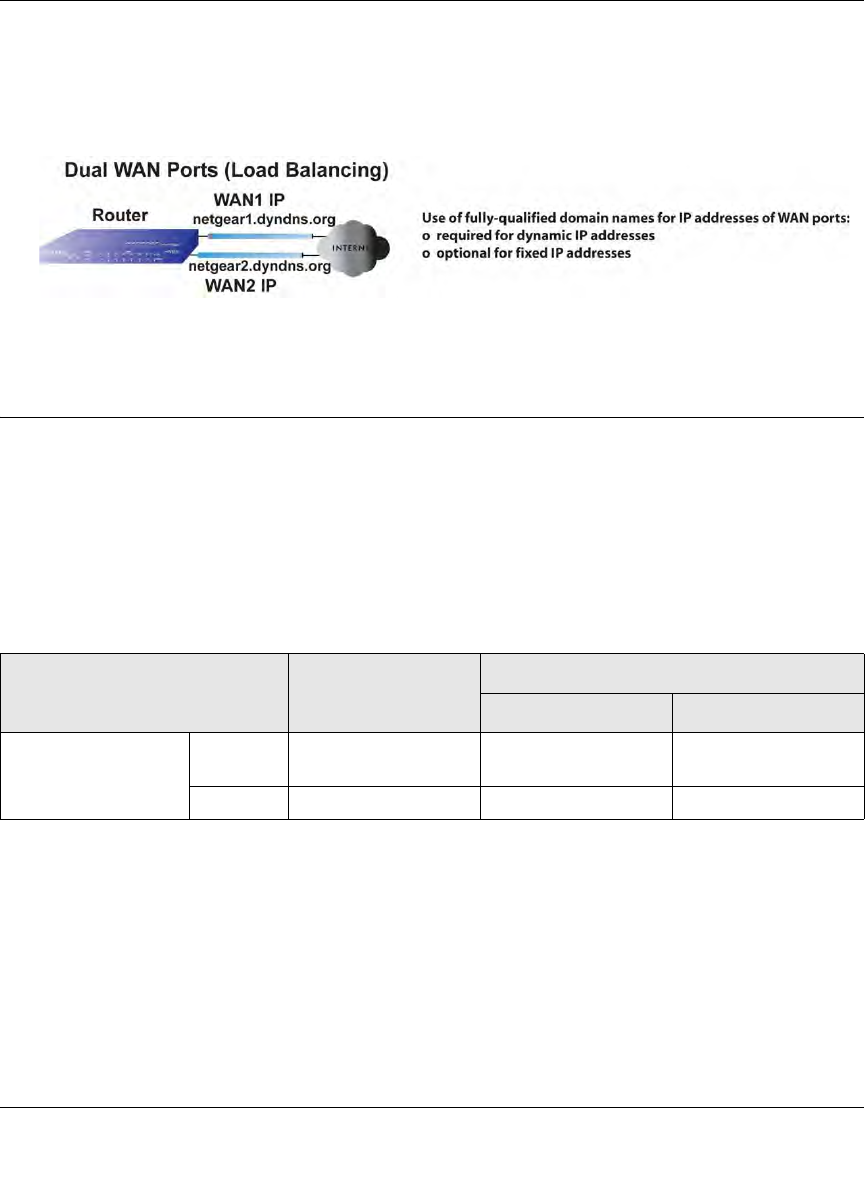
ProSecure Unified Threat Management UTM10 or UTM25 Reference Manual
Network Planning for Dual WAN Ports (UTM25 Only) B-7
v1.0, September 2009
• Dual WAN Ports in Load Balancing Mode. Load balancing for an UTM with dual WAN
ports is similar to a single WAN gateway configuration when you specify the IP address. Each
IP address is either fixed or dynamic based on the ISP: You must use FQDNs when the IP
address is dynamic but FQDNs are optional when the IP address is static.
Inbound Traffic
Incoming traffic from the Internet is normally discarded by the UTM unless the traffic is a
response to one of your local computers or a service for which you have configured an inbound
rule. Instead of discarding this traffic, you can configure the UTM to forward it to one or more
LAN hosts on your network.
The addressing of the UTM’s dual WAN port depends on the configuration being implemented:
Inbound Traffic to a Single WAN Port System
The Internet IP address of the UTM’s WAN port must be known to the public so that the public can
send incoming traffic to the exposed host when this feature is supported and enabled.
Figure B-3
Table B-1. IP Addressing Requirements for Exposed Hosts in Dual WAN Port Systems
Configuration and
WAN IP address
Single WAN Port
(reference case)
Dual WAN Port Cases
Rollover Load Balancing
Inbound traffic
• Port forwarding
• Port triggering
Fixed Allowed
(FQDN optional)
FQDN required Allowed
(FQDN optional)
Dynamic FQDN required FQDN required FQDN required



